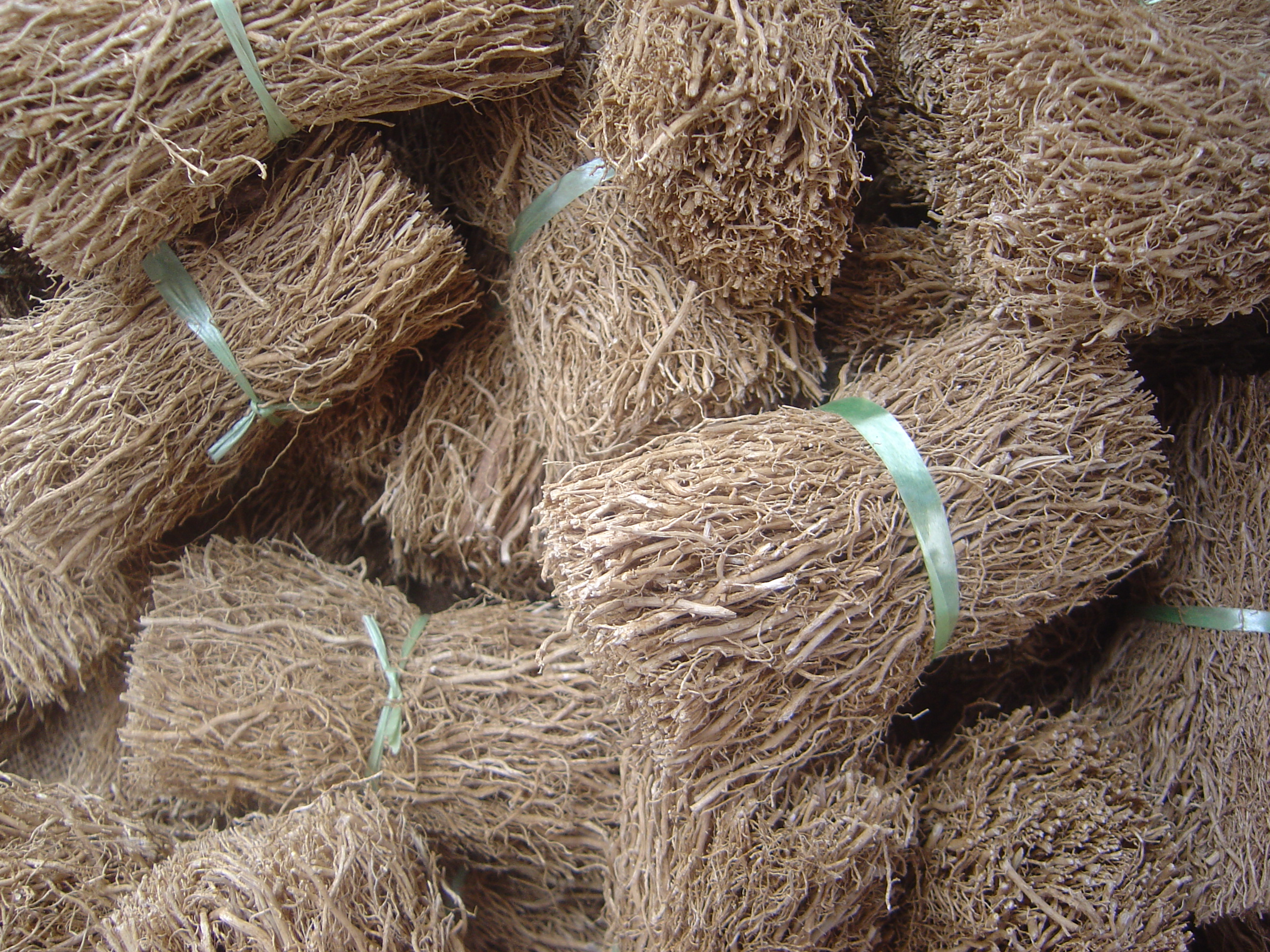|
Chrysopogon Zizanioides
''Chrysopogon zizanioides'', commonly known as vetiver and khus, is a perennial bunchgrass of the family Poaceae. Vetiver is most closely related to ''Sorghum'' but shares many morphological characteristics with other fragrant grasses, such as lemongrass (''Cymbopogon citratus''), citronella (''Cymbopogon nardus'', ''C. winterianus''), and palmarosa ('' Cymbopogon martinii''). Etymology Vetiver is derived from the Tamil வெட்டிவேர் (''veṭṭivēr'') meaning "root that is dug up," via French ''vétyver''. In Northern India it is also called ''khus'' (grass, not to be confused with ''khus khus'', which refers to poppy seed). History During the reign of Harshavardhan, Kannauj became the biggest centre for aromatic trade and for the first time, a vetiver tax was introduced. Description Vetiver grows to high and forms clumps as wide. Under favorable conditions, the erect culms can reach three metres in height. The stems are tall and the leaves are long, ... [...More Info...] [...Related Items...] OR: [Wikipedia] [Google] [Baidu] |
Carl Linnaeus
Carl Linnaeus (; 23 May 1707 – 10 January 1778), also known after his ennoblement in 1761 as Carl von Linné Blunt (2004), p. 171. (), was a Swedish botanist, zoologist, taxonomist, and physician who formalised binomial nomenclature, the modern system of naming organisms. He is known as the "father of modern taxonomy". Many of his writings were in Latin; his name is rendered in Latin as and, after his 1761 ennoblement, as . Linnaeus was born in Råshult, the countryside of Småland, in southern Sweden. He received most of his higher education at Uppsala University and began giving lectures in botany there in 1730. He lived abroad between 1735 and 1738, where he studied and also published the first edition of his ' in the Netherlands. He then returned to Sweden where he became professor of medicine and botany at Uppsala. In the 1740s, he was sent on several journeys through Sweden to find and classify plants and animals. In the 1750s and 1760s, he continued to collect an ... [...More Info...] [...Related Items...] OR: [Wikipedia] [Google] [Baidu] |

